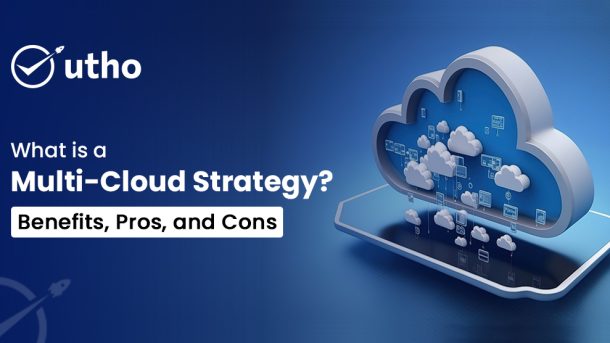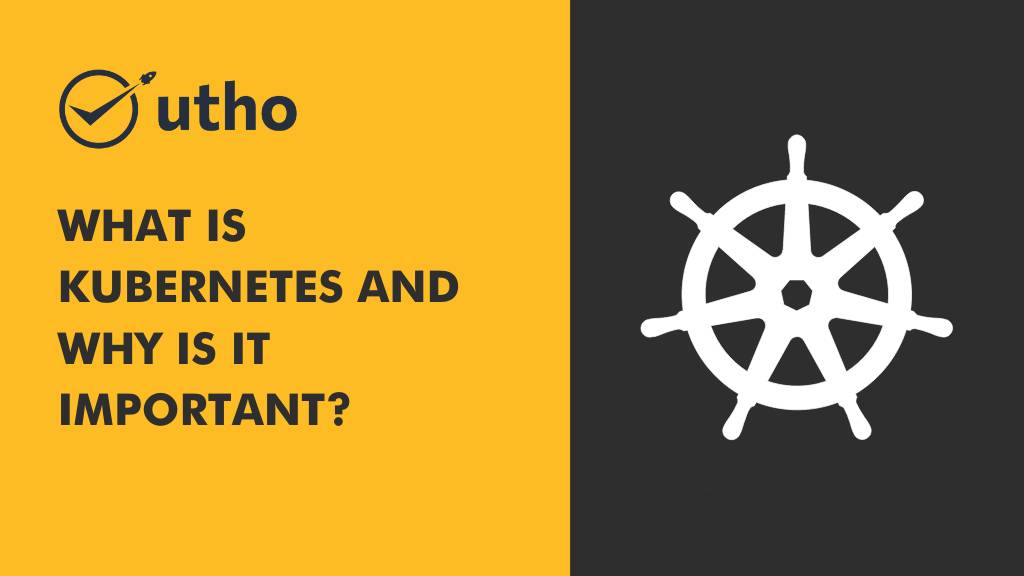With the rise of cloud computing, many businesses are using a multicloud strategy to manage their IT. But what exactly does this term mean, and how can it benefit organizations? A multicloud strategy uses cloud services from multiple providers. It avoids reliance on a single vendor. This approach lets companies use the best of different cloud platforms. It meets various business needs, cuts costs, and boosts resilience.
Why Use a Multi-Cloud Strategy?
As cloud computing becomes key to IT, a risk arises. Relying on a single cloud provider is like putting all eggs in one basket. A multicloud strategy helps mitigate these risks by distributing workloads across different platforms. This is vital for firms that must ensure uptime, avoid vendor lock-in, and meet various regulations. This approach lets businesses pick the best cloud service for each workload. That includes storage, computing power, and advanced analytics.
Key Factors to Consider in a Multi-Cloud Strategy
Before using a multicloud strategy, businesses should consider these factors. They must ensure it aligns with their goals:
- Interoperability: Ensure the cloud providers allow seamless integration. They should let data and apps move smoothly between environments.
- Cost Management: A multicloud strategy can optimize costs. It can choose the cheapest provider for each service. But, it can complicate billing and management. Consider using cloud cost management tools to track expenses across different providers.
- A multicloud setup needs strong security to manage data across platforms.
- Businesses must ensure their multicloud strategy includes:
- Encryption
- Identity management
- Compliance with regional regulations
- Vendor Management: Using multiple cloud providers can make it hard to manage relationships and SLAs with each. A clear vendor management strategy is essential to maintain consistency and reliability.
Pros of a Multi-Cloud Strategy
A multicloud strategy has challenges but offers big benefits. It can give businesses flexibility, cut costs, and boost resilience. Here’s a detailed look at the key benefits:
1. Avoiding Vendor Lock-In
- What It Means: Vendor lock-in happens when a business relies on a single cloud provider. It makes switching or diversifying services hard and costly.
- Benefit: A multicloud strategy lets organizations spread workloads across multiple providers. This avoids the risk of becoming too dependent on a single vendor. This lets them switch providers for better pricing, features, or performance.
- Example: A company could store critical data on AWS but run analytics on Google Cloud. If AWS raises prices or changes its terms, the company can move some workloads to other providers. This won't disrupt its operations.
2. Cost Optimization
- What It Means: Cloud providers have different pricing and discounts for storage, compute, and bandwidth.
- Benefit: A multicloud strategy lets businesses use the cheapest services from each provider. For instance, they can choose a cheaper storage provider. Then, they can use another for its superior data processing.
- An e-commerce company might use Google Cloud's BigQuery for cheap analytics. But, it would rely on Microsoft Azure for cheaper storage. This would optimize its cloud costs. By distributing resources strategically, the company can significantly reduce its operational costs.
3. Enhanced Resilience and Reliability
- What It Means: A single cloud provider can have outages. If a business depends on that provider, it can face serious impacts.
- Benefit: A multicloud strategy boosts resilience. It spreads workloads and data across multiple clouds. This setup minimizes the risk of a total shutdown during an outage, as critical systems can continue to operate on other platforms.
- Example: A fintech company might run its primary database on AWS but keep a replica on Microsoft Azure. If AWS goes down, the company can swiftly switch to a backup instance on Azure. This will ensure its customers have uninterrupted service.
4. Access to Best-of-Breed Services
- What It Means: Each cloud provider excels in specific areas, such as AI capabilities, advanced data analytics, or IoT services.
- Benefit: A multicloud strategy allows businesses to select the best cloud services for their needs. This means they can use a cloud provider’s strengths. They won't be tied to a single ecosystem. This will lead to better, more tailored solutions.
- A media company might use Google Cloud for its AI video tools. It would use IBM Cloud for secure data management. This approach ensures that they get the most out of each provider's unique offerings.
5. Increased Bargaining Power
- What It Means: By working with multiple cloud vendors, businesses can avoid being at the mercy of a single provider’s pricing and terms.
- Benefit: Engaging with several providers gives businesses more leverage in negotiations. They can secure better rates, discounts, or custom contracts by showing that they have other options.
- A manufacturing company using AWS, Google Cloud, and Azure might leverage its AWS agreements to negotiate better terms with Google Cloud. The ability to shift workloads or data to another provider can be a strong bargaining tool in securing competitive rates.
Cons of a Multi-Cloud Strategy
A multicloud strategy offers flexibility and a wide range of services. But, it also poses challenges that businesses must manage. Here are some of the most significant disadvantages, explained in detail:
1. Increased Complexity in Management
- What It Means: Managing multiple cloud providers is more complex than using one. This is due to differences in interfaces, APIs, and services.
- Challenge: IT teams must know the nuances of each cloud provider, from AWS to Google Cloud to Azure. This can require extra training and expertise. This complexity can extend to managing resources, too. Each platform may have different tools for tracking performance, usage, and billing.
- A company using AWS for compute, Google Cloud for ML, and Azure for storage must manage three sets of APIs, billing systems, and dashboards. This can increase the workload for IT teams, leading to potential inefficiencies or errors if not managed properly.
2. Data Security and Compliance Challenges
- What It Means: With data on different platforms, it's harder to keep a consistent security framework. Each cloud provider has its own security protocols, certifications, and encryption methods.
- Challenge: Using multiple providers complicates data privacy and compliance with GDPR, HIPAA, and CCPA. Inconsistent security settings can create vulnerabilities. This makes breaches easier.
- A healthcare company using multiple cloud providers must encrypt patient data. It must also ensure compliance with HIPAA on all platforms. If a provider's encryption or access controls aren't set up right, it could cause a serious data breach. This would harm both finances and reputation.
3. Higher Costs if Not Managed Carefully
- What It Means: A multicloud strategy can cut costs. It does this by choosing the cheapest services for specific needs. But, it can also lead to unexpected expenses.
- Challenge: Without a solid cost management strategy, businesses may face high egress fees for transferring data between providers. They may also incur charges for underused resources. Monitoring and predicting costs across multiple platforms requires specialized tools and continuous oversight.
- Example: An e-commerce company might host its website on AWS but store backups on Google Cloud. If there is a need to frequently transfer data between these providers, the resulting data transfer fees (egress costs) can quickly add up. Without monitoring these transactions, the company could face a much larger bill than anticipated.
4. Inconsistent Performance Across Providers
- What It Means: Different cloud providers have varying strengths. This can cause inconsistent performance when workloads are spread across multiple platforms.
- Challenge: A multicloud environment's performance can suffer from differences in service capabilities, like data transfer speeds, server response times, and regional data center availability. This inconsistency can cause a poor user experience. It may slow some applications.
- A financial services firm might find that data analytics runs faster on Google Cloud. But, it may have slower response times when accessing data on Azure. These variations can cause inefficiencies in data processing and analytics. They hurt productivity.
5. Complex Vendor Management
- What It Means: Using multiple cloud providers can be a burden. It requires managing relationships and SLAs with each one.
- Challenge: Vendor management means tracking contracts and service agreements. It also involves negotiating terms and ensuring providers meet service levels. This process can become time-consuming and can require dedicated resources to manage effectively.
- Example: A multinational company might use AWS, Azure, and Google Cloud to host different parts of its infrastructure. Managing SLAs for uptime, negotiating prices, and handling support tickets on multiple platforms can require a vendor management team. This raises costs.
Best Practices for Managing a Multi-Cloud Strategy
- Implementing a multicloud strategy can be highly beneficial when done correctly. Here are some best practices to help businesses navigate the complexities:
- Centralized Management Tools: Use tools like Terraform, Kubernetes, or cloud management platforms. They let businesses manage multiple clouds from a single interface. This helps in maintaining consistency in deployments and managing resources more efficiently.
- Regular Security Audits: Conduct frequent security assessments of each cloud provider. Ensure they meet compliance standards and have consistent security practices across all environments.
- Optimize Data Flow: Strategically plan data storage and transfer to minimize egress costs. Consider using CDNs or data caching. They can reduce frequent data transfers between providers.
Is a Multi-Cloud Strategy Right for Your Business?
A multicloud strategy diversifies cloud resources and boosts resilience. It also leverages the best features of various cloud platforms. However, it’s not a one-size-fits-all solution. Businesses must weigh the trade-offs of flexibility and risk. They must balance the benefits against the costs, complexity, and security risks. With the right tools and a solid plan, organizations can excel with a multicloud strategy. This will keep them agile and competitive in 2024's changing cloud landscape.
For a multicloud strategy, choose the right providers. Also, manage the integration. This is key to balancing cost, performance, and security.




